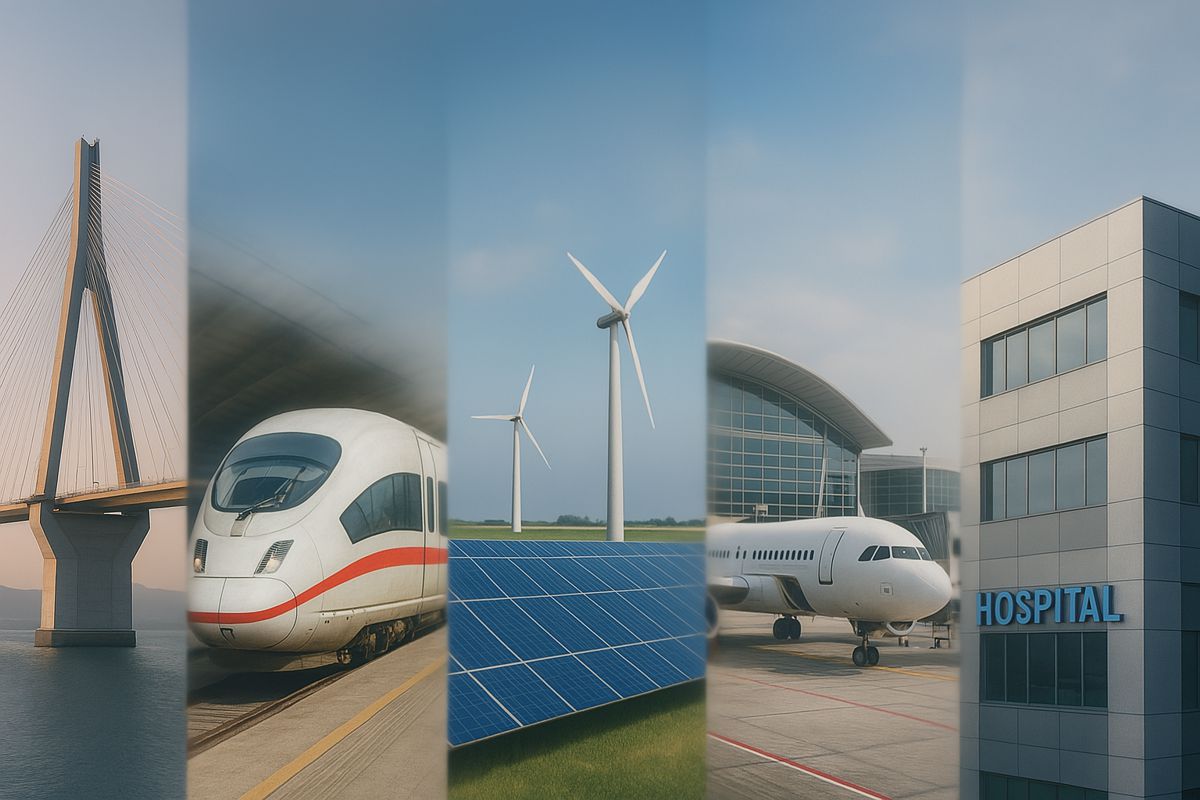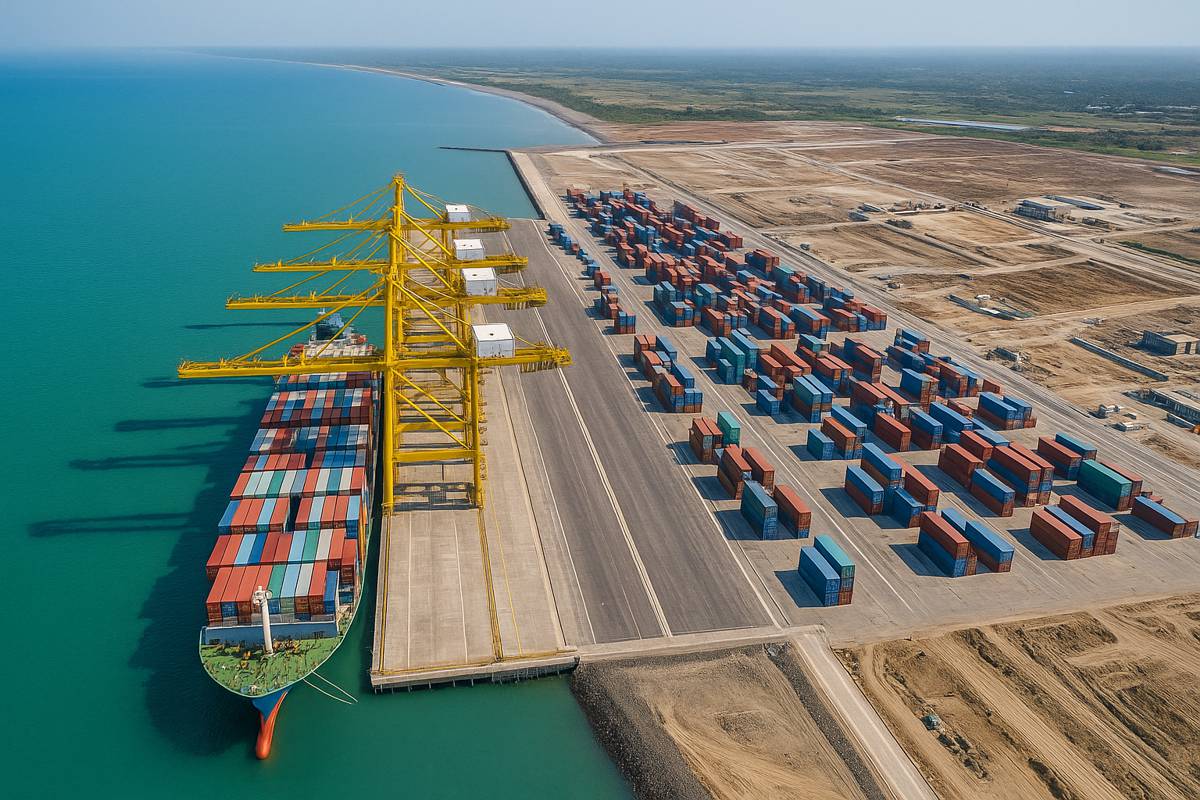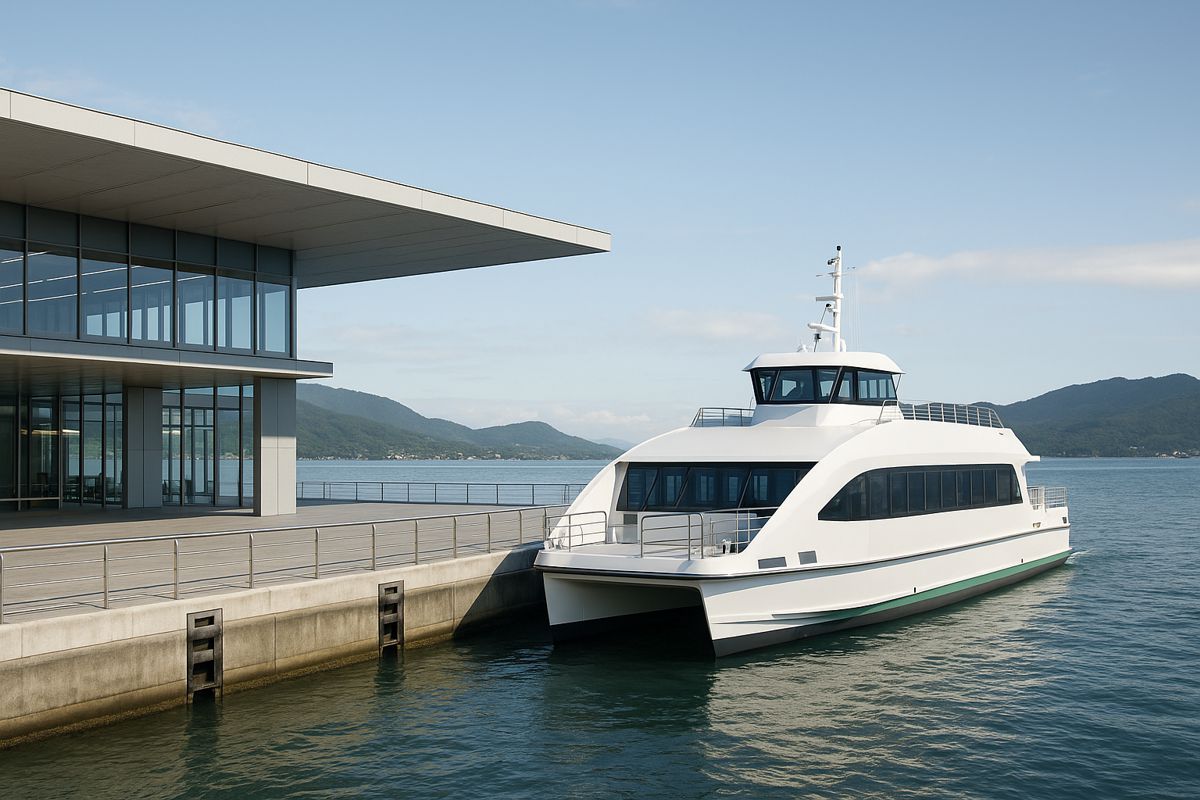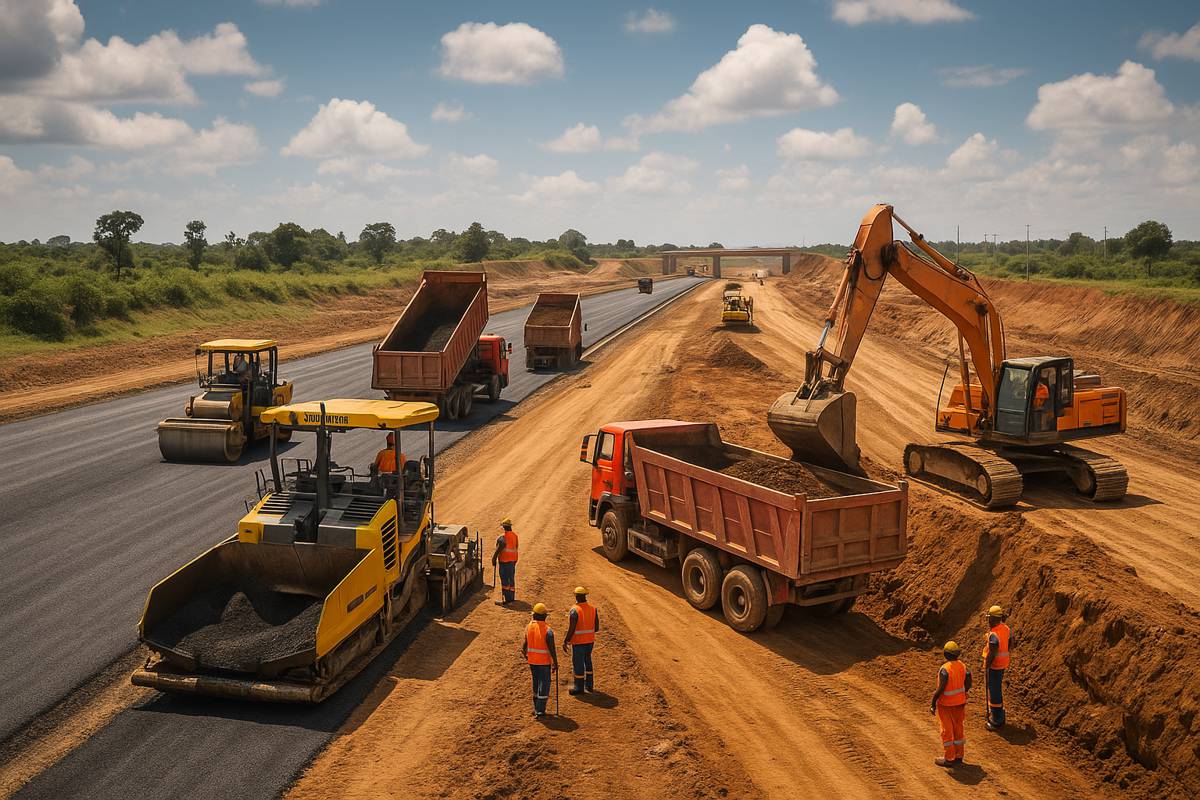The Ultimate Guide to Public Private Partnership Financing
Public–Private Partnerships (PPPs) have emerged as a key mechanism to deliver roads, bridges, railways, and even digital networks around the world. In a PPP, a government partners with private companies to design, finance, build, and often operate public infrastructure over a long-term contract. The private sector typically invests upfront capital and expertise, recovering its costs over time through payments from users or the government.
This approach appeals to cash-strapped governments by spreading project costs over decades and tapping private innovation. As a result, the past decade has seen a surge of Public–Private Partnership infrastructure projects on every continent, from project finance for high-speed rail lines in Europe to solar power farms in Africa, toll highways in Asia, and modernized airports in the Americas. Each project offers lessons in funding, risk-sharing, and public value.
Yet PPPs are no silver bullet. To benefit society, they must be structured carefully to truly leverage private-sector strengths. This feature begins with the basics – ideal for students and general readers – and then builds depth, examining flagship projects across regions, the financial engineering behind PPPs, success factors and pitfalls, and emerging trends like green and digital PPP models.

What Are Public–Private Partnerships?
At its core, a Public–Private Partnership is a long-term agreement in which a private entity takes on significant responsibility (and risk) to deliver a public infrastructure project or service, in exchange for payments tied to performance. Unlike traditional public works (where governments pay contractors up front), PPPs involve private financing of public projects, with investors recouping their money over time.
A common goal is to harness the private sector’s efficiency and innovation to achieve on-time, on-budget delivery. As World Bank experts note, when PPPs are properly designed and executed, they can “create social value through on-time and on-cost delivery,” bringing efficiency gains, innovative design, global expertise, and new capital to public projects. In other words, a well-structured PPP can deliver value for money beyond what traditional public procurement might achieve.
Key Features of a PPP
Long-Term Contract: PPP contracts often span 20–30 years or more, covering construction and a lengthy operation/maintenance period.
Private Financing & Expertise: The private partner (often a consortium) finances a substantial portion of upfront costs and brings technical know-how in design, construction, and operations.
Risk-Sharing: Risks (e.g. construction delays, cost overruns, or revenue shortfalls) are allocated between public and private partners. Ideally, each risk is borne by the party best able to manage it, a principle fundamental to PPP design.
Performance-Based Payments: The private investor earns a return either directly from user fees (like highway tolls or airport charges) or through periodic government payments (for example, availability payments contingent on the asset meeting performance standards). This ensures the private party has skin in the game to maintain quality.
Eventual Handover: In many Public–Private Partnerships, especially “build–operate–transfer” models, the asset is transferred back to the government at the end of the concession term, often in a specified condition.
Common PPP Structures
Design–Build–Finance–Operate (DBFO) / Build–Operate–Transfer (BOT): The private partner designs, constructs, finances and operates the facility for a concession period, after which ownership transfers back to the public sector. This is a full-service concession model integrating all phases.
Build–Own–Operate–Transfer (BOOT): Similar to BOT, but the private entity owns the asset during the concession term, taking on ownership risks and benefits (including any residual value) before transferring it later.
Design–Build–Finance–Maintain (DBFM) / Design–Build–Finance–Maintain–Operate (DBFMO): The private partner designs, builds, and finances the project, then provides maintenance (and sometimes operations) for a defined term. The government may retain direct operation of the service, but the private side keeps the asset in good condition. Payments from government typically begin after construction, based on availability/service quality.
Build–Lease–Transfer (BLT): The private sector builds the project and leases it to the government or end-users. After the lease period, control transfers to the public authority.
(Many other acronyms exist, but these are the most common models. In practice, each PPP is tailored – for example, some include design-build only with private finance (DBF), others include operate only phases, etc. What matters is the distribution of responsibilities and risks across the partnership.)
In summary, PPPs span a spectrum of private involvement, from minimal (e.g. private only builds and finances during construction) to extensive (private designs, builds, finances, operates, and possibly owns during the contract). Governments choose PPP when they expect the private sector can deliver better value or manage certain risks more effectively than public agencies alone – “all things being equal, the rationale for choosing a PPP… is if it provides better Value for Money” than traditional public procurement.
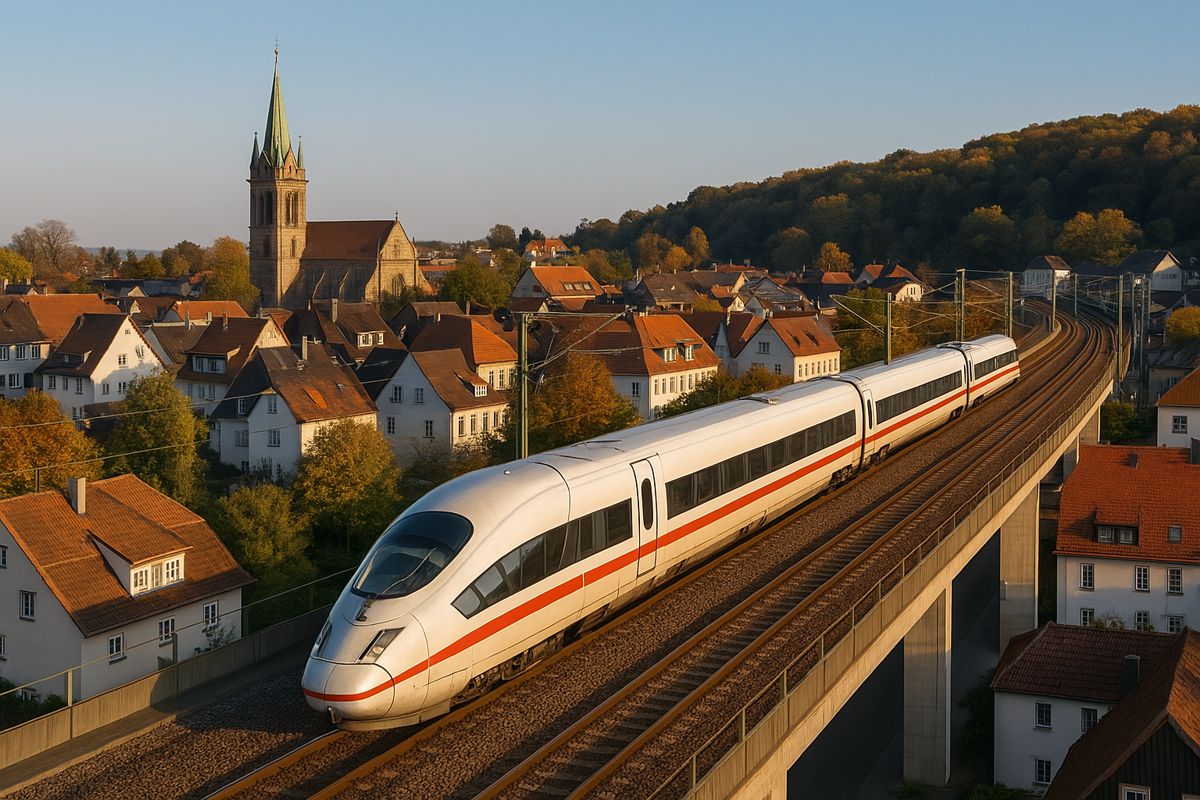
Flagship Public-Private Partnership Projects Around the World
Over the last decade, PPPs have financed and delivered flagship infrastructure projects across the globe, often breaking new ground in their regions. Below we tour major projects in Europe, Africa, Asia-Pacific, and the Americas, highlighting what was built and how PPP made it possible.
Europe – High-Speed Rails and Mega Airports
Europe has a rich PPP history, from the UK’s pioneering Private Finance Initiative to continental projects in transport and social infrastructure. A standout recent example is Turkey’s Istanbul New Airport, opened in 2018. Developed by a consortium of five private firms under a PPP concession, it is one of the world’s largest airports with a planned capacity of 150 million passengers/year.
“Our project is the biggest PPP project in Turkey and it will have a huge impact,” said Nihat Özdemir, board member of the Istanbul Grand Airport consortium. Indeed, the airport’s first phase – costing about $7.2 billion – was built in under three years through a PPP model, a remarkable feat. The private consortium will operate the airport for 25+ years, recovering its investment from airport revenues, before eventually transferring the asset back to the state. This project has set a global benchmark for scale: by leveraging private financing and expertise, Turkey delivered a state-of-the-art hub that might have otherwise burdened public budgets or faced delays.
Elsewhere in Europe, high-speed rail and highway PPPs have advanced. In France, the 302-km Tours–Bordeaux high-speed rail line (LGV Sud Europe Atlantique) was delivered via a €7.8 billion PPP concession, opening in 2017 and cutting travel times from Paris to Bordeaux. The private consortium (led by VINCI) bore roughly half the cost in exchange for a 50-year operating concession.
In the UK, while enthusiasm for private finance has cooled in recent years, earlier PPPs gave rise to projects like the M25 motorway widening and numerous modern schools and hospitals under PFI contracts. Germany and Netherlands have also used PPPs for highway upgrades (e.g. Germany’s A7 Autobahn expansion under a PPP completed in 2019). These European experiences show PPPs can deliver big projects, but also highlight debates on cost.
The European Court of Auditors noted PPPs can be more expensive if not managed well (due to private financing costs and transaction complexity). Therefore, European governments have become more selective, using PPPs where they clearly offer value or innovation.
Africa – New Roads, Power, and Social Impact
Across Africa, PPPs are helping bridge a chronic infrastructure gap – notably in transportation and energy. One headline project is Kenya’s Nairobi Expressway, a 27 km six-lane toll road opened in 2022. It is Kenya’s first major highway PPP, built by a Chinese firm under a Build–Operate–Transfer model. China Road and Bridge Corporation (CRBC) financed and constructed the $600 million expressway and will operate it for 30 years, recouping its investment through toll charges. The Kenyan government contributed land and regulatory support but did not have to fund the road upfront.
At the opening, Kenya’s Transport Cabinet Secretary James Macharia praised the project as “one of the best pieces of infrastructure ever done in Africa” and “a good example of cooperation” between the government and foreign investors. The road has significantly cut travel time from downtown Nairobi to the airport (from nearly 2 hours in traffic to about 20 minutes), demonstrating the real-world benefits a PPP can bring to the public.
In West Africa, Senegal’s Dakar–Diamniadio Toll Highway (completed in phases by 2016) is another PPP success story often cited: a French-led consortium invested to build a multilane expressway linking Dakar to its new airport, dramatically improving connectivity. Similarly, Morocco’s 510 MW Noor Ouarzazate solar plant, commissioned 2016–2018, was structured as an independent power project (IPP) – essentially a PPP – with private firms designing, financing, and operating the massive concentrated-solar complex under a long-term power purchase agreement. This project tapped global capital and technology to leapfrog Morocco into a renewable energy leader.
PPPs in Africa have also extended to energy and utilities: for example, Uganda’s Bujagali Hydropower Plant and Nigeria’s Azura-Edo Power Plant were delivered via PPP-type arrangements, injecting much-needed generation capacity. South Africa has been a regional frontrunner, using PPPs for its Gautrain rapid rail and a series of renewable energy projects. In fact, 78% of PPP infrastructure investment in Africa in recent years has been in the energy sector (mostly renewables), aided by programs like South Africa’s REIPPP for independent power producers.
This underscores that PPPs aren’t only about roads – they are funding power grids, airports, ports, water treatment and more. However, African PPPs face challenges: a limited number of countries dominate the deal flow (South Africa, Morocco, Nigeria, Kenya, etc.), and projects require strong government support to reach bankability. Still, the past decade has shown PPPs can catalyse infrastructure in Africa when the ingredients are right, combining international finance with local development needs.
Asia-Pacific – Highways, Airports, and Digital Expansion
Asia-Pacific’s infrastructure push has embraced PPP models to varying degrees. India, with its vast needs, has become a laboratory for PPPs in highways, airports, and urban transit. The government’s National Highway PPP programmes and toll road concessions have delivered thousands of kilometres of modern highways. For instance, the Delhi–Mumbai Expressway is being built in sections, some under hybrid-annuity PPP models (where the government bears part of the cost). India has also used PPPs for metro rail lines and airports – the Hyderabad Metro (opened 2017) was one of the world’s largest metro PPP projects, and major airports like Delhi and Mumbai have been operated by private consortia under long-term leases. While not all have been smooth (Hyderabad’s ridership lag impacted the private operator), these projects have added capacity faster than government funding alone might allow.
In Southeast Asia, the Philippines and Indonesia have ramped up PPP efforts. The Philippines created a dedicated PPP Centre and successfully bid out projects like the Mactan–Cebu International Airport (a $600M PPP to build a new terminal, opened in 2018) and numerous toll roads and school buildings. Indonesia closed a landmark PPP for the Central Java Power Plant in 2016, a $4.2 billion 2,000 MW plant that was the first to receive government guarantees under a new framework – paving the way for more private investment in power. Smaller nations like Vietnam and Bangladesh have also ventured into PPPs for roads, power plants, and airports, often with support from the World Bank or Asian Development Bank to structure deals.
China presents a unique case: domestically, China led an enormous PPP program in the mid-2010s to spur local infrastructure (thousands of projects worth over $2 trillion were registered), though many ended up financed by state banks – blurring the line between true private investment and off-budget borrowing. Internationally, China is more known for state-to-state infrastructure deals (e.g. Belt and Road Initiative) than classic PPPs. However, Chinese companies are increasingly participating in PPP consortia abroad (as seen in Africa’s Nairobi Expressway, or Bangladesh’s Payra port PPP).
In the Pacific and Oceania, Australia has a mature PPP market – for example, Sydney’s WestConnex motorway project involved significant private financing and later asset recycling (sale of stakes to investors). Australia and New Zealand have used PPPs for everything from toll roads to hospitals and schools (NZ’s Transmission Gully highway was built via PPP, albeit with cost challenges).
These experiences highlight the importance of robust contracts and oversight, as some projects, like the Brisbane Airport Link tunnel, faced financial collapse when traffic forecasts proved too optimistic – a cautionary tale in risk allocation.
Americas – Highways and Transit – North and South
In North America, PPPs (often called P3s) have gained traction, though more slowly. The United States, traditionally reliant on public funding, saw several high-profile PPPs in the last decade. LaGuardia Airport’s new Terminal B in New York is a flagship: a $4 billion PPP deal where a private consortium financed, built, and now operates the terminal (opened 2020–2022), in return for airline lease payments. It’s been showcased as a model for upgrading aging U.S. airports without solely public money.
Many U.S. states have also partnered with the private sector on toll highway lanes and bridges – for example, Virginia’s I-66 Express Lanes outside Washington D.C. opened in 2022 under a PPP concession, and Colorado’s US-36 Express Lanes and transit project was delivered via PPP. Florida’s Port of Miami Tunnel (completed 2014) and Texas SH-130 toll road are other notable PPP ventures. Some early experiments did stumble (e.g. a private concession of the Indiana Toll Road went bankrupt due to optimistic traffic projections, though the asset continued operations and was re-concessioned).
These cases taught U.S. policymakers to carefully assess demand risk and not view PPPs as “free money.” In fact, a U.S. Congressional Budget Office study found PPPs can speed up project delivery, but they don’t magically make projects cheaper – the costs are ultimately borne by users or taxpayers in the long run. The value lies in efficient delivery and risk management rather than cost savings on financing.
Canada, by contrast, has been a PPP pioneer in North America. Canadian provinces routinely use PPP models for public buildings and transit. For example, Ontario’s Highway 407 ETR (one of the world’s first electronic toll highways) was concessioned to private operators, and British Columbia built the Canada Line metro in Vancouver via PPP. In the last decade, projects like Montreal’s Champlain Bridge replacement (opened 2019 as a PPP with availability payments) and the ongoing Gordie Howe Bridge linking to the US (a $5+ billion PPP) illustrate Canada’s continued reliance on private partners for large builds.
Latin America has a long, proven track record with PPP concessions, especially in Chile and Colombia. Chile has concessioned dozens of highways, airports, and even prisons, with a dedicated framework since the 1990s – it recently expanded Santiago’s airport and numerous inter-city highways via PPP contracts. Colombia launched its massive 4G Roads Program in the 2010s, a $14–17 billion effort to build or upgrade 5,000+ km of highways through 30 PPP concessions Despite some delays and financing hurdles, many of these projects are now under construction or completed, transforming connectivity in Colombia. As of a few years ago, Chile and Colombia together had awarded around 100 PPP projects in just five years – a testament to how critical private capital has become for Latin America’s infrastructure ambitions.
Brazil, Mexico, Peru, and others have likewise turned to PPPs for new airports, rail lines, and energy projects (e.g. Mexico’s toll roads, Peru’s Lima Metro Line 2, Jamaica’s Highway 2000). The Americas illustrate both successes (e.g. streamlined project delivery, innovation like electronic tolling) and challenges (projects renegotiated due to economic shifts, or concerns about long-term costs). Good governance and transparency have proven essential to keep PPP programs on track in the region.
While PPPs are widespread, they still fund a minority of infrastructure overall. Even with the surge in projects, PPPs account for an estimated 15–20% of total infrastructure investment in developing countries. Most infrastructure is still traditionally funded. Thus, PPPs are a tool, not a panacea – they work best when used selectively for the right projects, backed by enabling environments.
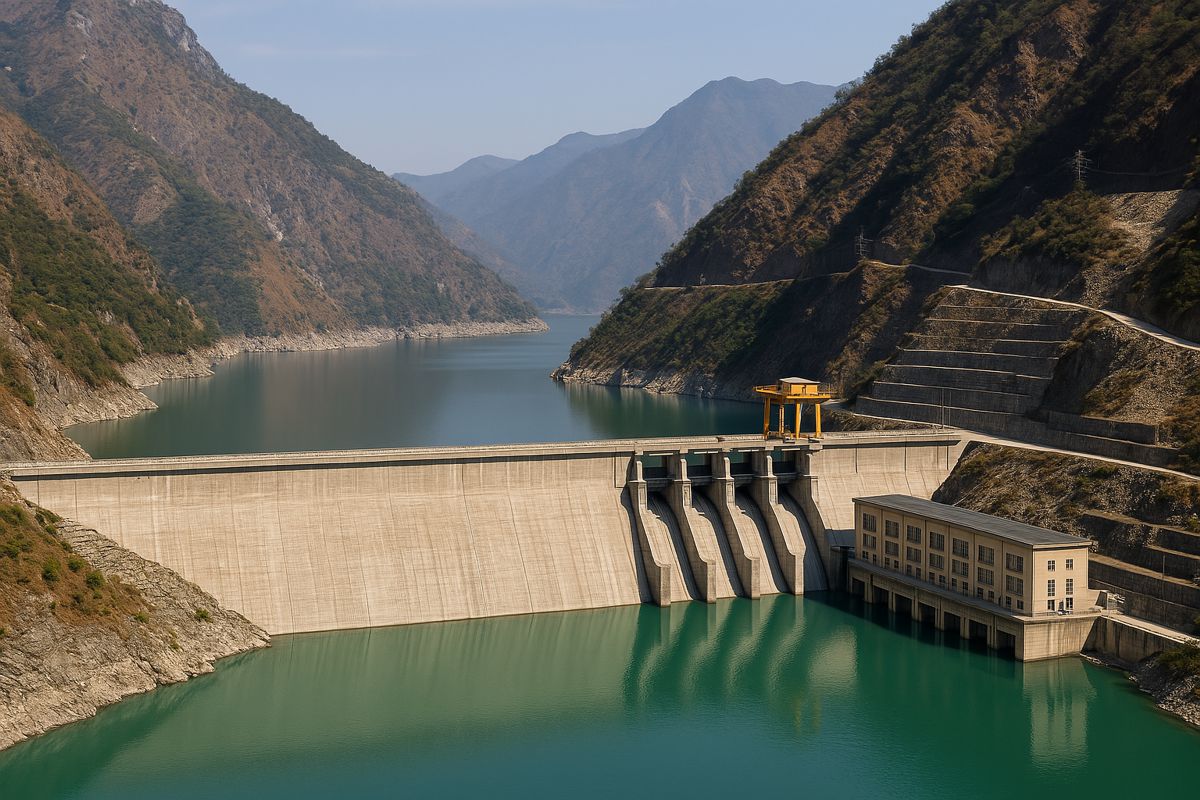
How Public-Private Partnerships Are Financed and Structured
To understand PPPs’ impact, one must dig into their financial structuring. A PPP project’s viability hinges on who pays, when, and how risks are shared.
Unlike standard public works funded 100% by government budgets, PPPs assemble funding from multiple sources and assign responsibilities in complex ways.
Diverse Funding Sources
It’s a misconception that “all PPP costs are covered by the private sector.” In reality, PPP financing is typically a mix of private and public capital. Data from low- and middle-income countries show that on average only ~60% of PPP investment comes from the private sector (equity from project sponsors and loans from commercial banks or investors). The remaining ~40% often comes from the public sector or international development banks. Governments may provide upfront subsidies or co-invest alongside private partners (especially for socially important projects that aren’t fully profitable). Multilateral lenders like the World Bank, regional development banks, or export-credit agencies frequently loan funds or guarantee parts of the project, lowering risk to attract private finance. Example: In a toll highway PPP, a government might contribute 20% of construction cost as a grant (to make the project financially viable at reasonable toll rates), while the private consortium finances the other 80% via its own equity and bank loans. This blend is called blended finance, and it recognizes that purely private funding might either demand very high tolls or avoid the project if returns don’t justify the risk.
Private Capital Structure
The private consortium usually creates a special purpose vehicle (SPV) for the project – a dedicated company that signs the PPP contract and raises funds. The SPV’s financing typically includes equity (10–30% of the project cost, put in by the project sponsors or investors who will own the SPV) and debt (70–90%, borrowed from banks or via bonds). A common structure is a debt-to-equity ratio of 70:30 or 80:20, though some low-risk projects (e.g. with government revenue guarantees) have gone higher on debt. The equity investors earn profit only if the project performs (they are last in line to be paid, after debt service), so they are motivated to ensure success. Lenders, on the other hand, demand sufficient cashflow certainty – thus PPP contracts often include safeguards like minimum traffic guarantees or availability payments to assure lenders they will be repaid. In emerging markets, multilateral development banks may provide debt with longer tenors or guarantees to cover political risks, making the project “bankable.”
Risk Allocation Models
A centrepiece of PPP structuring is deciding who bears each risk – e.g. construction risk (cost overruns, delays), revenue risk (will usage be as forecasted?), operating cost risk, political/regulatory risk, force majeure, etc. PPP contracts typically transfer significant construction and operational risks to the private partner: the contractor often agrees to a fixed price, date-certain construction, absorbing any overruns, and to maintain performance standards during operation, or face penalties. Meanwhile, some risks remain with government – for instance, the public sector usually retains ownership of the asset (except during concession), provides land and permits (covering land acquisition risk), and may shoulder risks like extreme force majeure or changes in law. Demand risk (will users come/pay?) is a crucial variable: in toll-based PPPs (e.g. toll roads, airports), the private partner often accepts demand risk – meaning if traffic or passengers are lower than forecast, its revenue drops (and vice versa). This is high risk, so sometimes governments offer revenue guarantees or allow contract extensions to help recovery. In availability-based PPPs, by contrast, the government assumes demand risk and simply pays the private partner a fixed monthly/annual fee as long as the asset meets set performance criteria (so the private side faces performance risk but not usage risk). Each model has trade-offs: transferring demand risk can incentivize the private operator to provide good service to attract users, but it may also require higher returns for that uncertainty. A McKinsey analysis emphasizes that optimally allocating risk to the private sector’s strength – their ability to price and manage certain risks – is key to PPP success: “Setting the optimal level of private-sector participation and risk transfer should result in projects being completed on time and on budget”. If governments try to offload all risk, investors may price it too high or shy away; if governments keep too much risk, the PPP might not achieve better outcomes than a normal project.
Value for Money and Cost of Capital
Because private financing typically carries higher interest rates than sovereign borrowing, PPPs can be “structurally more expensive” in pure financial terms. Therefore, a rigorous Value-for-Money (VfM) analysis is done upfront. This means comparing the whole-life cost of delivering the project as a PPP versus a hypothetical public procurement. The VfM assessment factors in efficiency gains, risk transfer benefits, and innovation that a PPP might bring, against the extra financing and transaction costs . Only if the PPP route shows equal or better value (for the quality and outputs delivered) should it proceed. Many countries (UK, Australia, Canada, etc.) have institutionalized VfM tests. For instance, the UK required a “Public Sector Comparator” analysis for PFI projects, to demonstrate that the PPP’s net present cost was lower than if the government financed and ran the project itself. If a PPP is pursued for off-balance-sheet financing reasons alone, without true efficiency gains, it can lead to poor VfM – essentially hiding debt while committing to long, sometimes costly payments. Thus transparency in accounting for PPP liabilities is also important (governments should account for future payment obligations and contingent liabilities like guarantees). Modern PPP frameworks often require disclosing these and getting legislative approval for PPP commitments to ensure fiscal responsibility.
Returns and Payment Mechanisms
How do private investors get paid? Two broad mechanisms:
User-Pay PPPs: The private company collects fees from end-users. Classic examples are toll roads (tolls from drivers), airports (airline fees, passenger fees, retail revenues), ports (container handling fees), or utilities (water/electricity tariffs). The contract typically grants the private operator the right to these revenues for the concession term. If revenue is higher than expected, the operator profits; if lower, they may struggle to meet their finance payments (some contracts include revenue-sharing or floors/ceilings to prevent windfall gains or severe shortfalls).
Government-Pay (Availability) PPPs: The government (or public agency) makes periodic payments to the private partner as long as the infrastructure is available at defined service levels. These are common for social infrastructure like hospitals, schools, or roads without tolls. For example, a hospital PPP might have the government pay an annual unitary charge to the consortium for building and maintaining the hospital, with deductions if, say, rooms or equipment are unavailable or maintenance isn’t up to standard. The private side doesn’t depend on user fees but on government budget, shifting demand risk to the public side. This model provides more certainty of cash flow to the private partner, often resulting in a lower cost of capital and thus lower overall cost to government – but the government must budget for the payments over decades.
Some hybrid arrangements exist (e.g. shadow tolls where the government pays per user, effectively simulating a user fee; or minimum revenue guarantees to supplement user fees if they fall short). Also, PPP contracts usually allow inflation-indexing of payments or tolls, and sometimes foreign exchange protection if revenues and debts are in different currencies.
Ensuring Bankability: For a Public-Private Partnership to reach financial close, all stakeholders need confidence. Lenders will do intensive due diligence on construction plans, cost estimates, demand forecasts, and the legal framework. Often, credit enhancement is needed in developing markets – e.g. guarantees (the World Bank’s guarantee instruments, or partial risk guarantees, are frequently used to backstop government obligations like termination payments), or political risk insurance (e.g. from MIGA or export credit agencies to cover risks of expropriation, war, currency inconvertibility). Governments may also set up viability gap funds to give grants that make borderline projects bankable and attractive to bidders. Over the past decade, there’s been innovation in financing – green bonds for PPP projects, attracting institutional investors, and infrastructure funds pooling capital to invest in PPP equity. However, a World Bank review noted that institutional investors (like pension funds) directly finance only about 1% of PPP investment in low and middle-income countries, due to risk and illiquidity – most financing still comes from banks or development agencies. Mobilizing more of this private capital is a current focus area, as huge pools of institutional money could be tapped if PPP risks are structured suitably.
In sum, PPP financing is a balancing act: blending funds to minimize cost, allocating risks to incentivize performance, and structuring payments so that both public and private partners see a clear path to achieving their goals. If done well, the result is an on-time project with life-cycle efficiency (since the builder knows they must maintain the facility for decades, they often build it better upfront). If done poorly, a PPP can falter, requiring renegotiation or bailouts. As one IMF report put it plainly, “PPPs are not a panacea for infrastructure challenges… they must be approached strategically and selectively to fully realize benefits.”.

Success Factors and Challenges in Public-Private Partnerships
Why do some Public-Private Partnership projects succeed while others stumble? Decades of global experience have surfaced critical success factors that increase the likelihood of a PPP delivering promised value, as well as common pitfalls to avoid. Here are key points:
Factors Behind Successful PPP
Strong Enabling Environment: Successful PPP programs rest on a robust policy, legal, and institutional framework. Governments need clear PPP laws or regulations, transparent procurement processes, and capable institutions (often a dedicated PPP unit) to evaluate and manage projects. Countries like Chile, South Africa, and South Korea built comprehensive frameworks and capacity, which helped them roll out many projects over time. A stable legal environment reassures investors that contracts will be honored and disputes fairly resolved.
Political Will and Commitment: High-level government commitment is vital. PPPs often span multiple political administrations, so they require consistent support and protections against political risk. If a new government cancels or renegotiates deals arbitrarily, investor confidence is shattered (e.g. changes in Mexico’s administration led to cancellation of the partially built new Mexico City airport PPP in 2018, causing losses). Successful countries treat PPPs as non-partisan, long-term infrastructure strategies.
Project Preparation & Feasibility: PPPs are complex and can fail if rushed without proper prep work. A thorough feasibility study should be done to select the right projects for PPP (not every project is suited), estimate costs and revenues realistically, and assess socio-economic impact. World Bank experts emphasize having a pipeline of bankable projects identified through rigorous screening for commercial viability and public priority. Adequate project preparation funds (for studies, transaction advisors, etc.) are a worthwhile investment upfront to avoid bigger problems later.
Optimal Risk Allocation: As discussed, assigning risks to the party best able to manage them is crucial. That often means the private sector handles construction and technical risks, while the public side may retain certain demand or political risks. The contract needs to be very clear on risk-sharing, with built-in mechanisms (like compensation events, force majeure clauses, performance deductions). When risk allocation is well calibrated, the private partner has incentives to perform efficiently, and the public partner isn’t overpaying for unnecessary risk transfer. Imbalanced contracts (too much risk on one side) typically lead to disputes or renegotiations.
Transparent, Competitive Procurement: The bidding process for PPPs should encourage competition and transparency to get the best deal. Open tenders with clear evaluation criteria and equal information for all bidders build market confidence. Rushed or opaque procurements can result in higher costs or even corruption. Many countries now use standardized bidding documents and even online platforms to ensure fairness. A competitive process also spurs innovative solutions – bidders might propose technical designs or commercial structures that authorities hadn’t considered, improving outcomes.
Sound Contract Management: Signing the contract is just the start – a PPP will last decades and needs active management. Governments must monitor performance (often via an independent engineer or PPP unit) to ensure the private operator is meeting service standards and maintenance obligations. There should be clear KPIs and penalty/reward regimes. Renegotiations should be governed by the contract to avoid opportunism by either side. A common failure is when the public authority “signs and forgets,” only to realize years later the asset isn’t maintained or the contract was modified informally. Building a skilled contract management team is a success factor seen in places like the UK, Australia, and Chile.
Stakeholder Engagement and Communication: PPP projects, especially in infrastructure, affect communities – through construction disruptions, new user fees, or changes in services. Gaining public acceptance is important. Stakeholder management (consulting local communities, clearly communicating project benefits and any tariffs) helps prevent backlash. For example, early toll road PPPs in some countries faced protests or political pushback (e.g. Nigeria’s Lekki Toll Road had public opposition to tolls, eventually leading the state to buy back the concession). Learning from this, recent PPPs try to involve users in the planning stage, or include affordability measures (like discounted toll periods, or ensuring alternative free routes). A World Bank handbook notes that clear communication and transparency are important to manage expectations and maintain support.
Common Challenges and Pitfalls
Over-optimistic Projections: A classic pitfall is overly rosy demand or cost estimates at the project outset (whether due to optimism or pressure to make the numbers work). If traffic, revenue, or other assumptions prove wrong, the project can face financial distress. This happened in various toll road PPPs where traffic was far below forecasts, undermining revenues. The lesson is to use conservative, well-vetted assumptions and possibly independent reviews of forecasts. Where uncertainty is high, structuring in guarantees or flexibility (like revenue band mechanisms) can help.
High Bidding Costs and Complexity: PPP tenders are expensive for bidders (lots of due diligence, finance arranging, legal fees) and for governments (transaction advisors, lengthy negotiations). This can deter competition if not managed – sometimes only one bidder remains, which is not ideal. Streamlining the PPP process and providing some government support for bid costs in large projects can keep bidders interested. The complexity also means PPPs take longer to procure than traditional projects, which is a challenge when immediate infrastructure stimulus is needed.
Fiscal Risks and Hidden Debt: PPPs can create contingent liabilities for governments – e.g. if a revenue guarantee triggers payments, or if a termination occurs and compensation is due to lenders. These risks are sometimes not transparently reported, leading to “hidden debt.” Several countries got into trouble by signing many PPPs with heavy government undertakings that weren’t budgeted, only to face fiscal strain later. Best practice is for governments to quantify and disclose PPP liabilities and integrate them into debt sustainability analyses. The IMF and World Bank now provide tools for this, and some countries cap the total PPP obligations that can be taken on.
Renegotiation and Contract Stability: Statistics have shown a high percentage of PPP contracts, especially in Latin America, are renegotiated within a few years after financial close – often at the request of the private operator for better terms or due to scope changes by government. While some renegotiation is normal (unforeseen events happen over decades), frequent renegotiations can indicate issues in initial contract design or aggressive under-bidding. It also opens risk of moral hazard (a company bids low to win knowing it can renegotiate later). Ensuring the original contract is as complete as possible, and setting rules (or even costs) for renegotiation, can mitigate this.
Public Opposition and Perception: PPPs sometimes attract controversy – critics worry about private profits from public services, or higher user fees. If a PPP deal is perceived as favoring the private side (e.g. very high toll increases, or government bailouts of a failing concession), it can sour public and political support for future projects. Managing this means choosing projects that clearly benefit the public and structuring contracts so that excess profits are shared or tariffs are regulated to be fair. For instance, some toll road PPPs include revenue-sharing with government beyond a certain IRR, and some power PPPs have tariff review clauses to adjust if costs change drastically. Transparency in these arrangements helps build trust that PPPs are being used in the public interest, not as back-door privatization or crony deals.
In essence, a successful PPP requires a whole-of-life perspective – considering not just building the asset but operating it for decades in service of the public. It marries the discipline of the private sector with the social aims of the public sector. When that marriage works, PPPs can indeed deliver lasting infrastructure with efficiency. When it doesn’t, the divorce can be costly.
As the World Bank summarizes, achieving lasting success with PPPs “requires attention to critical building blocks across the project cycle” – from good laws and institutions, to careful project selection and preparation, to strong contract management. No single factor guarantees success; rather, it’s about getting many pieces right simultaneously.

Future Trends – Green, Digital, and Inclusive PPPs
The infrastructure landscape is evolving, and PPPs are adapting to new priorities. Here are some current and emerging trends shaping how public–private partnerships are conceived and implemented going forward:
Green and Sustainable PPPs: With climate change and sustainability at the forefront, there is a push to ensure Public-Private Partnership projects align with environmental goals. This has given rise to terms like “Green PPPs” or “climate-smart PPPs.”
Renewable Energy and Clean Technology: A growing share of PPP investments globally is going into renewable energy projects – wind farms, solar parks, hydro plants – as countries transition from fossil fuels. For example, India’s renewable energy PPPs (solar parks developed with private operators under long-term tariffs) have scaled up fast, contributing to India’s climate targets. Governments structure these as PPPs by providing land and guarantees, while private firms bring capital to build and run the green infrastructure. The World Bank notes PPPs can be “key to promoting investment in climate-smart infrastructure” when structured with the right incentives and risk-sharing.
Climate Resilience Projects: Beyond mitigation (clean energy), PPPs are also being eyed for adaptation and resilience infrastructure – such as seawalls, flood control systems, or resilient housing. One notable example is in the U.S., where the first climate adaptation PPP – a project in Miami for stormwater infrastructure – is underway. These projects often have uncertain revenue streams (since they provide public protection), so models like availability payments or resilience bonds are being tried. The private sector’s role is to bring innovation in design (maybe nature-based solutions) and lifecycle maintenance to ensure long-term resilience.
“Green” Contract Clauses: Even in traditional transport or building PPPs, contracts are starting to include green requirements – like energy efficiency standards for buildings, use of low-carbon materials, or provisions to incorporate renewable energy. Some highway PPPs now include EV charging infrastructure as part of the concession. Green financing is also a trend: PPP projects are tapping green bonds or sustainability-linked loans, where financing costs might be tied to the project achieving certain emissions or renewable energy targets.
Overall, PPPs are being seen as a vehicle to help achieve the Sustainable Development Goals (SDGs) and Paris Climate Agreement objectives. However, balancing sustainability with profitability can be tricky. There is often a need for public or international climate finance to make green PPPs viable (for instance, concessional loans from the Green Climate Fund or similar, blended into the financing package). Nonetheless, the momentum is growing for every PPP to be screened through a climate lens.
Digital Infrastructure and Technology-Driven PPPs
As the digital revolution continues, governments are looking at Public-Private Partnership models to develop digital infrastructure – things like broadband networks, data centers, smart city systems, and even national digital ID platforms. Private tech companies have the expertise and capital, while governments need to ensure universal access and security. Examples and trends include:
Broadband and Connectivity: Several countries have used PPPs to expand internet access, especially in underserved areas. For instance, Australia’s National Broadband Network (NBN) initially started with private investment (though it later became mostly government-led after challenges). More successfully, smaller nations have partnered with telecom companies to lay fiber-optic cables or build 5G networks under revenue-sharing arrangements. The UNECE has even published a guide on PPPs in digital infrastructure, highlighting how private partners can deploy solutions in healthcare, education, etc. via PPP structures.
Smart Cities and Intelligent Transport: PPPs are enabling smart city infrastructure – such as smart street lighting (where a company upgrades city lights and shares energy savings), traffic management systems, and sensor networks. These often involve concession-type models or leases where the private firm installs tech and the city pays over time from efficiency gains. In transport, as autonomous vehicles (AVs) and connected cars loom, cities may partner with tech firms to upgrade roads with sensors, communication units, and digital signage. However, a challenge noted by experts is that long-term PPP projects might face technology obsolescence risk – today’s cutting-edge system could be outdated in 10 years. Contracts need flexibility to upgrade technology and avoid locking governments into old tech. “Future-proofing” is becoming a buzzword in PPP design.
Digital Public Services: Some governments are exploring PPP approaches for things like national digital ID systems, e-governance platforms, or even blockchain-based registries. The idea is the private sector can build and possibly operate the technical platform, while the government ensures data sovereignty and privacy. Payment might be per transaction or a fixed fee. There is caution here due to sensitive data, but pilots are ongoing.
Cybersecurity and Data Centres: Governments need secure data storage and are huge consumers of cloud services. Instead of building state data centres alone, some have partnered with private data centre providers (with strict security clauses) – effectively a PPP for data infrastructure. Also, PPP-like contracts for cybersecurity services are emerging, where a company protects public sector networks in exchange for payments tied to performance.
In summary, digital PPPs are less traditional but growing. They require adapting PPP frameworks to faster technology cycles and different risk profiles (tech risk vs. construction risk). They also often involve intangibles (software, data) rather than physical assets, which complicates the typical “build, operate, transfer” model. Expect to see more experimentation in this space, especially as connectivity becomes as essential as roads and power.
People-First and Inclusive PPPs
There is a notable shift in thinking: PPPs should not only deliver value for money but also value for people and the planet. Leading this charge, the United Nations Economic Commission for Europe (UNECE) has advocated for “People-First Public-Private Partnerships,” projects that put social and environmental outcomes at the core. This is part of a broader trend to ensure PPPs contribute to inclusive development and leave no one behind:
UNECE’s People-First PPP Initiative: UNECE challenged governments and companies to develop PPPs that are “compliant with the UN SDGs”, launching a call for 10 flagship people-first PPP projects globally. This model emphasizes five outcomes: increased access and equity, economic effectiveness, environmental sustainability & resilience, replicability, and stakeholder engagement. For example, a people-first transport PPP would not just be evaluated on cost, but also on how it improves mobility for low-income users, its carbon footprint, its potential to be scaled or repeated elsewhere, and how it engages local communities. An evaluation methodology now exists to score PPP projects on these criteria.
Community Benefits and Local Content: New PPP contracts, especially in emerging markets, often include requirements for local job creation, skills transfer, and community development initiatives. For instance, a highway PPP might require the concessionaire to build local feeder roads or invest in community facilities as part of their obligations. These ensure that beyond the main asset, local communities see direct benefits. In South Africa, PPP projects are encouraged to have Black Economic Empowerment (BEE) partners and local subcontractors, blending social policy with PPP procurement.
Transparency and Accountability: The people-first approach also pushes for greater transparency – publishing contracts, performance reports, and involving civil society in PPP oversight. Some cities have created citizen monitoring committees for their PPP services (e.g. public transport) to give feedback and increase accountability.
Blended Social Outcomes: We also see PPPs expanding into social infrastructure with innovative payment models like Social Impact Bonds or outcome-based payments. While not PPPs in the traditional sense, these hybrids involve private financing for social programs (education, health) repaid by government only upon achieving results. The line between these and PPPs is blurring as the focus shifts to outcomes.
Gender and Inclusion: There is increasing attention to how PPP projects can promote gender equity – e.g. ensuring women are employed in construction and operation, facilities cater to female users’ safety and needs, and even directing a portion of PPP proceeds to programs for women and girls. The World Bank’s PPP certification program (CP3P) is updating its materials to emphasize climate and gender in PPPs, reflecting this growing priority.
This trend recognizes that infrastructure is not just about cement and steel, but about people’s lives. A PPP highway that bypasses a community without access ramps, for example, might be financially successful but fail the people-first test. Thus, the next generation of PPPs are being designed with a broader stakeholder view. In practice, this can sometimes mean slightly lower returns for investors (as they take on extra costs for social measures) or more involvement of NGOs and development banks to fund those components. But it also opens new opportunities: PPPs that deliver tangible social benefits may unlock grant funding or impact investment, and they tend to enjoy stronger public support, reducing political risk.
Resilience and Flexibility in the Face of Disruption
The COVID-19 pandemic, economic shocks, and technological disruption (as discussed) have stress-tested PPP models. Projects reliant on user fees like airports and toll roads saw revenues plummet during lockdowns, forcing emergency renegotiations in many cases (governments had to decide whether to compensate operators for the unforeseen event).
Meanwhile, the need for flexibility in contracts has become evident.
Going forward
PPP contracts are being drafted with more force majeure and relief event clauses, specifically including pandemics or climate-related disasters, to clarify what happens and maintain partnership spirit during crises.
Some governments and investors are considering revenue risk-sharing mechanisms more seriously. For instance, dynamic concession terms (the concession length adjusts based on actual revenue, so the private partner eventually earns their target return but over a longer or shorter period depending on how reality compares to forecast) have been used in some toll road contracts to mitigate extreme outcomes.
Refinancing clauses: With interest rates and economic conditions changing, many Public-Private Partnerships include clauses that if the project is refinanced (say, at a lower interest rate once it’s operational and less risky), the savings are shared between government and investors. This ensures the public also benefits from improved financial conditions.
Modular and Phased Approaches: Rather than one giant PPP contract spanning 30 years, some are broken into phases or have mid-term checkpoints. This can allow adjustments if technology or demand shifts. For example, a city might do a 10-year PPP for smart traffic systems, with an option to extend or re-bid as tech evolves.
Capacity Building: The challenges of recent years taught many governments that they need strong in-house expertise to handle PPP shocks. There is now more investment in training officials in contract management, financial analysis, and risk mitigation strategies specific to PPPs. International organizations (World Bank, OECD, etc.) are actively sharing lessons from the pandemic on how to build resilience into PPPs.

Public-Private Partnerships as Partners in Development
Over the past decade, Public–Private Partnerships have proven their worth by delivering critical infrastructure across the globe – faster and often more efficiently than governments could alone. From Turkey’s record-breaking airport to Kenya’s transformative highway and India’s vast renewable energy parks, PPPs have shown they can marshal private capital and innovation for public good. They have become an essential tool in the infrastructure finance toolkit, especially as the global investment gap remains in the trillions of dollars. As one World Bank blog noted, governments increasingly realize “they cannot go it alone and need to work with the private sector” to meet development goals.
However, this decade of experience also underscored that PPPs are no magic fix. They require careful setup, skilful negotiation, and vigilant management. When done right, a PPP allocates risks sensibly, protects the public interest, and aligns profit with performance – delivering quality infrastructure on-time, on-budget, and on-spec for users. When done poorly, a PPP can just as easily become a drain on public resources or a source of public anger. The difference lies in getting the fundamentals right: solid legal frameworks, transparency, competitive procurement, realistic expectations, and a focus on long-term value rather than short-term wins.
Looking ahead, PPPs are evolving to stay relevant. They are greener, factoring in climate sustainability; they are becoming smarter, embracing digital innovation; and they aim to be more inclusive, ensuring communities benefit broadly, not just the financiers. The concept of “People-First PPPs” signals this evolution from seeing PPPs purely as financial arrangements to seeing them as development partnerships. In a world facing climate urgency, rapid urbanization, and digital transformation, the PPP model is being tested and stretched in new directions – from financing fiber-optics to building flood defences.
For policymakers, engineers, and investors, the imperative is to keep learning and adapting the PPP approach. Multilateral agencies and industry experts continue to refine best practices, as evidenced by new guidelines and case studies published each year. There is also a push for standardization (through tools like the World Bank’s PPP Contractual Provisions guidance to make PPP deals easier to execute and understand.
In conclusion, Public–Private Partnerships will remain a cornerstone of global infrastructure development. When a PPP is structured with skill and foresight, it truly becomes a “partnership” – marrying public purpose with private efficiency in a win-win. As infrastructure needs mount – whether it’s highways to connect rural areas, renewable energy to power cities, or broadband to bridge the digital divide – governments that harness the expertise and funding of the private sector, while safeguarding public value, will likely find the PPP model an indispensable ally. The past ten years have been formative for PPPs worldwide; the next ten could well solidify a new generation of projects that are more sustainable, innovative, and equitable than ever before.
